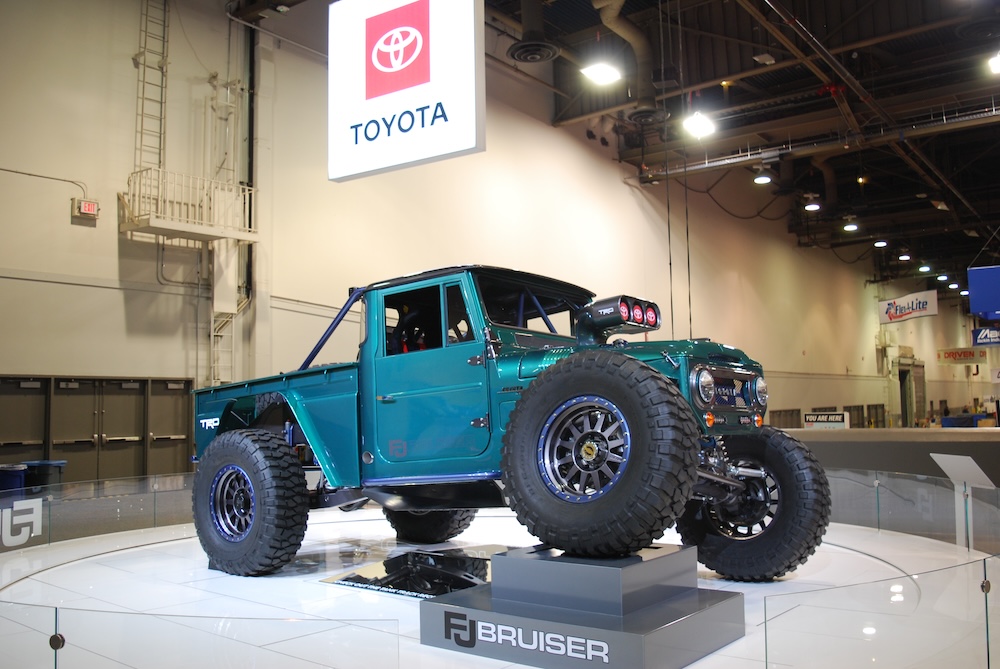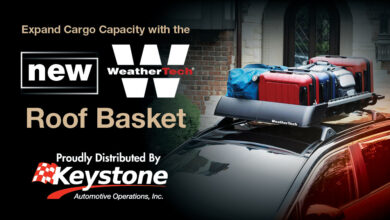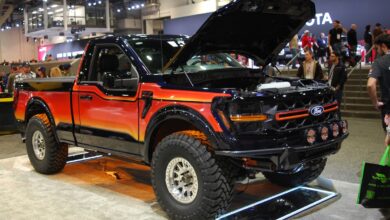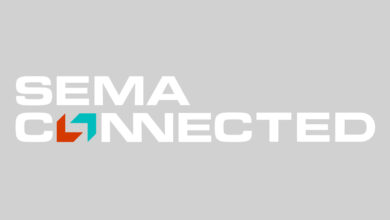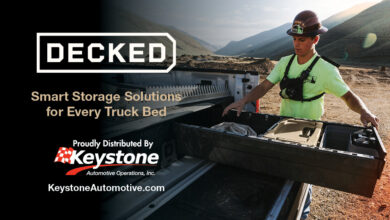OEMs & the Automotive Aftermarket
With an uneasy alliance at times, the two sides nonetheless need each other with industry challenges looming...
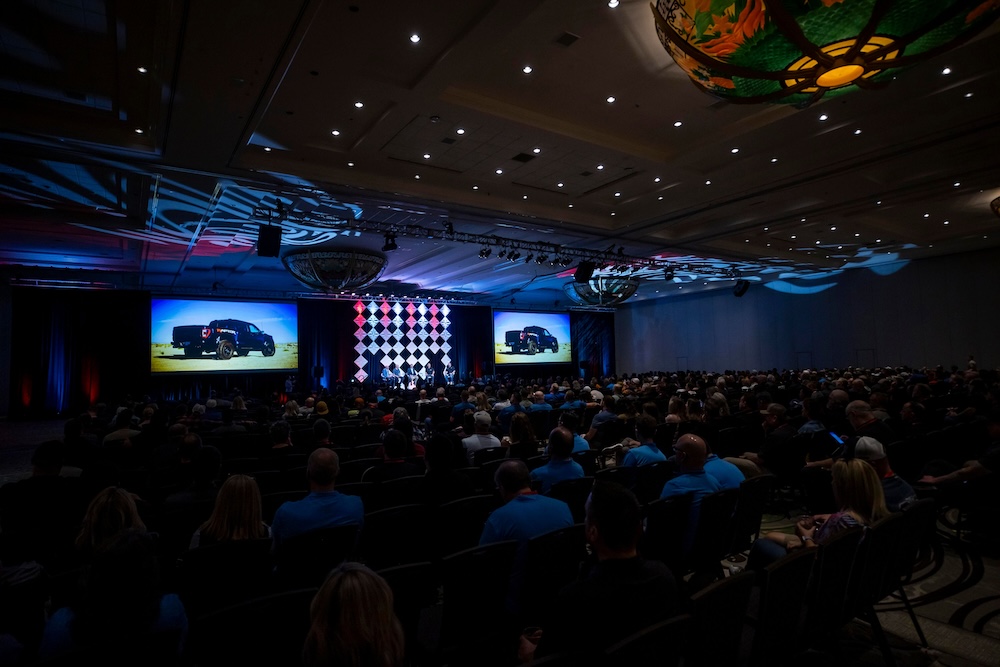
This article originally appeared in the June 2024 issue of THE SHOP magazine.
When it comes to the long-term relationship status between the specialty automotive aftermarket and original equipment manufacturers, it’s fair to say representatives from both sides would agree: “It’s complicated.”
For the OEMs—sometimes referred to as OEs—a lot of time, effort and investment go into creating specific models for specific markets. The ranks of carmakers are often staffed with enthusiasts who recognize the benefits of highly accessorized models and their positive influence on buyers, but they often work for executive teams whose members believe that each unit that rolls off the assembly line is a pristine work of art that should be left exactly as-is for eternity.
And those who would like to embrace customization still have concerns, real or imagined, over the extreme bottom level of subpar aftermarket products that can have a negative effect on brand reputation and at times lead unhappy customers to return to dealerships demanding fixes for problems that did not come from the factory.
Understanding that it relies on those vehicles for its very existence—and with well thought-out and research-backed responses to those and other objections—the aftermarket nevertheless remains suspicious of OEMs and their intentions as well, wary that its best ideas will be scooped up and included on new models after years of research and investment.
And that’s if the carmakers aren’t actively working against their efforts, locking electronic access points and making parts and systems difficult, if not impossible, to bypass or replace.
It’s been about two decades since many of the major automakers began exhibiting at the SEMA Show, and at the time the development was met with some resistance from longtime association members and showgoers.
But even as the OEM presence has scaled back a bit over the past couple of years, few would argue their participation at the show has led to a better sense of cooperation and partnership, along with real-world benefits for both sides.
Carmakers have forged strong relationships with top builders to create special editions and projects that enhance their brands, their presence has brought added consumer awareness to the industry and its solutions through mainstream media, and technical staff have shared their knowledge and ideas in seminars and other programs open to all.
Developments ranging from measuring sessions and dealer programs to teaming up on important efforts such as emissions compliance research and ADAS development have benefited aftermarket companies, and in many places common ground has been reached.
And their fates remain linked.
There’s little doubt the two sides will need each other in the face of current challenges. From electric, hybrid and other new propulsion developments to stricter government regulations and even the new consumer “mobility” mindset, the automotive industry is facing waves of change.
A united front by the automotive aftermarket and the OEMs will help specialty shops survive and thrive as the industry enters a new era.
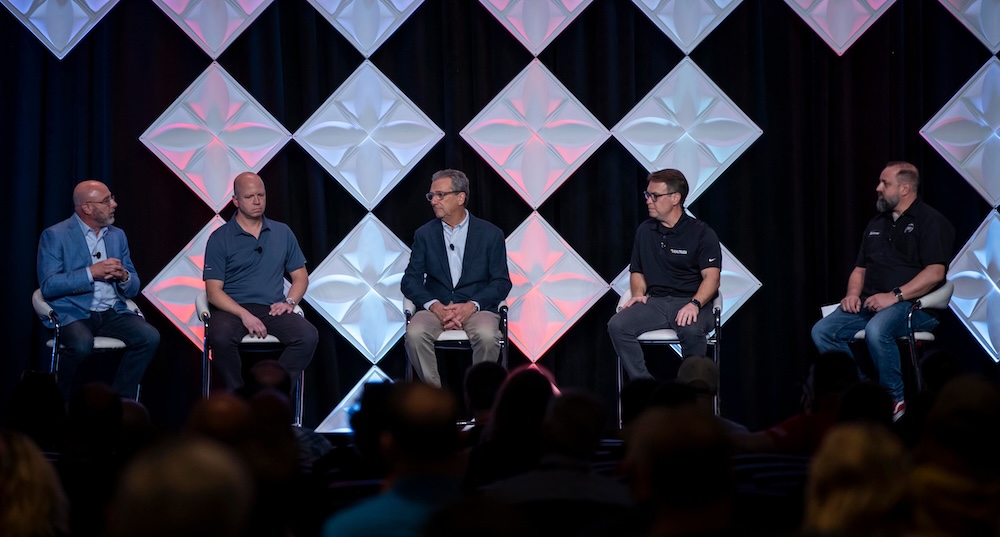
SPIRIT OF COOPERATION
That spirit of cooperation was highlighted during an opening night kickoff presentation at the Keystone Automotive BIG Show held in late February at the Gaylord Palms Resort and Convention Center in Kissimmee, Florida.
“Revolutionizing the Ride: The Relationship Between OEMs & Aftermarket Accessories in the Automotive Landscape” was presented by the Specialty Equipment Market Association’s (SEMA) Truck and Off-Road Alliance (TORA) council and moderated by automotive journalist and podcast host Sean Holman.
Panelists included:
- Brad Akins from Akins Ford Corp. and Wild Willies Custom Accessories in Winder, Georgia
- Steve Gilmore, Ford Motor Co. vehicle personalization chief designer
- Mike Spagnola, SEMA president
- Tony Ambroza, RealTruck chief growth officer
“The one development we’ve seen more and more recently is the deepening relationship between the manufacturers that build the vehicles that we can’t wait to get our hands on and the aftermarket suppliers—the ones that manufacture and provide the products we sell and install every day,” Holman says. “The internet, e-commerce, electric vehicles, advanced engineering and new material technology are just a few of the factors contributing to what seems to be a constantly evolving and changing automotive aftermarket landscape.”
And the stakes are high.
“We see over $50 billion is specialty annual sales, and over $351 billion in total economic impact,” says Spagnola. “We’re a big deal. The industry is huge.”
So, when it comes to accessorization trends and personalization, Gilmore says Ford starts by conducting in-house research, attending events, and talking with everyone from dealers to customers when creating its special vehicle packages.
“We have a lot of people at Ford who are automotive enthusiasts—who race and (accessorize),” he notes. “So, we look at the products, we look at what’s in the aftermarket, we think about that for our future, and we use those products where we can.”
As a member of SEMA’s Professional Restylers Organization (PRO) council, Gilmore works to showcase the benefits of OEM exposure to fellow council members.
“If I can get a win on any Ford vehicle that I’m putting accessories on to upgrade it, everybody else wins,” he explains. “I’m not exactly your competition—I’m trying to be your friend.”
Past Ford special vehicles such as Harley-Davidson and King Ranch trucks raised awareness for those companies, Gilmore notes. Recent Ford collaborations with aftermarket brands such as Warn Industries and FOX have proven equally successful.
“We see value in what the enthusiasts put onto their own vehicles,” he says. “We also have to rely on (aftermarket manufacturers) to do a lot of engineering. We both learn a lot.”
Ambroza notes that OEM/aftermarket partnerships are “vigorous. They are not easy.”
And they need to work for both sides.
“The aftermarket product that we make has to be better as a result of it,” he says. “We’ve found that over the last 10-20 years, when we do offer products to the OEM, it lifts the overall market.”
Maybe the biggest win, he notes, comes in terms of product and market awareness.
“Our research tells us that, quite honestly, most truck owners don’t even know that they can accessorize their vehicles beyond maybe floor liners and a couple of other (items). It’s scary, yet at the same time, that’s why we’re so excited about pursuing the market,” he says.
Carmakers can help aftermarket companies get to where they want to go.
“When you get great collabs, it helps all that. How do you inspire a new audience and get them thinking about what could be done that they’ve never seen happen before? It makes one aware that they can absolutely outfit their vehicle and pursue that dream with aftermarket accessories.”
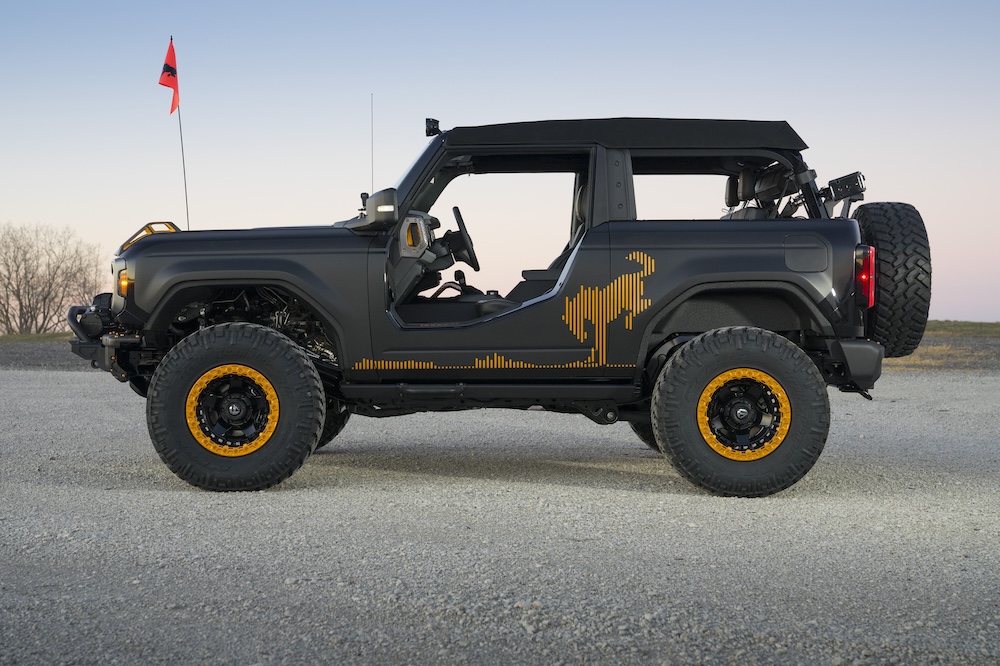
INSPIRATION & MOTIVATION
Akins Ford and Wild Willies Custom Accessories are an example of how new vehicle sales can spur aftermarket upgrades. The Wild Willies customization shop is located on the Akins Ford dealership campus.
“We took accessories about 10 years ago and looked at it as a department,” says Akins. “Through trial and error, we’ve been able to grow it into a $1-million-per-month department, with the majority of that being aftermarket accessories.”
Instead of being at odds, the factory and aftermarket combine to give buyers the unique ride they’re looking for, he says.
“What we see as a dealer and also as an accessory partner is that they complement each other,” he says. “We keep the branding separate. We use it as a complement. The OE side carries over to the accessory side. (Drivers) come back to the dealer for the accessory side.”
New-car buyers want to “differentiate,” he explains, with products including custom badging, colored lighting, blackout packages and technology upgrades joining traditional aftermarket favorites such as wheels and tires, running boards and exhausts.
Another big advantage is the built-in trust carmakers and dealerships have with their clients, he notes.
“OEs bring in the awareness and credibility. Customers recognize the name. They see we are OE-affiliated and (understand) we can build that vehicle that may look like a $100,000 vehicle they’ve seen in their neighborhood, but it’s really not.”
Also attractive to the aftermarket is the “massive war chest of marketing dollars” the carmakers have, adds Ambroza from RealTruck.
“It brings consumer awareness, relevance to the vehicle and the fact that it will fit,” he says of specific accessory categories found on OEM vehicles. “And let’s not pretend that warranty isn’t always a concern. So, if an OE is saying ‘This is a product we can stand by and support,’ that also overcomes an issue that a lot of people have.”
The panel used the Ford Raptor and Raptor R as examples of “halo” vehicles that spur enthusiasts’ dreams, leading to aftermarket involvement.
“If you think about Ford Raptors, they are gorgeous trucks, but not everybody can afford an $85,000 vehicle,” says Spagnola. “It’s aspirational. They maybe can’t afford the Raptor, but they can afford the $40,000 Ford F-150 and they still want to add, say, tires and wheels and running boards. We find time and again that Raptors and Raptor Rs set the bar for what’s possible, and then buyers start looking at their own trucks and say, ‘I can do this and this and this.’”
That motivation is also there for Raptor and Raptor R customers as well.
“The people who are buying these vehicles have money,” says Akins. “We’ve been surprised at the opportunity to personalize those top-end vehicles. You wouldn’t think a Raptor R (would need more), but people personalize to their liking.”
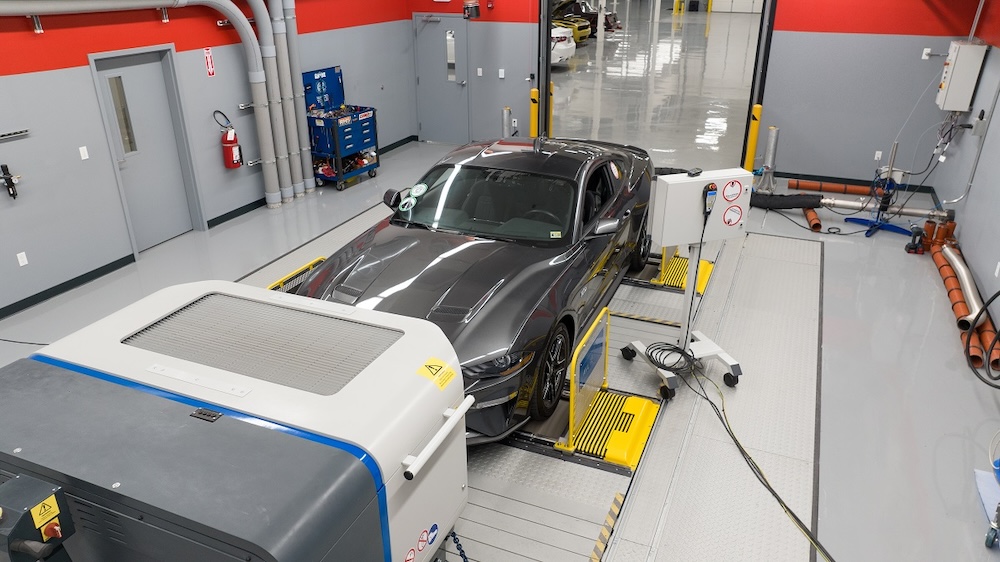
DRIVING TOWARD THE FUTURE
Host Holman prompted that “there are probably thousands of brands out there that wish they had that OE experience relationship.”
When it comes to what the carmakers are looking for in a partner, Gilmore from Ford says quality manufacturers in relevant categories who are willing to collaborate—and can be patient.
“The process takes forever,” he notes. “We go from ‘We like your product. We like your idea,’ to ‘Hey, let’s pull it in. We’ll take your engineering, take your test data,’ and then we start looking at it and we do our own testing.”
Then it’s plenty of back and forth between the companies.
“Sometimes we never get there,” he admits. “There are times we just can’t (work together). There might be regulations that pull us away from it. Or there might be something else that says, ‘This doesn’t work for us.’ But we look for (collaborations) all the time. There’s always a trend going on.”
Taking the aftermarket as a whole, SEMA and the OEMs continue to work behind the scenes to promote and protect the entire industry, Spagnola reveals.
“It is a relationship,” he says. “We do a lot more work with the OEs than probably everybody knows. We have measuring sessions at SEMA Garage, ADAS calibrations right now, those sorts of things. There’s a lot more work that goes on.”
Pressing issues on the horizon will require an even greater commitment between the two sides, as the transportation stakes are continually raised, Spagnola adds, using ADAS testing as an example.
“Even some of the OEs were wondering what happens with these systems when we lift a vehicle to a certain height. We took a Chevy Silverado and tested it both statically and dynamically,” he says. “Those tests are over $100,000 each, but SEMA has dedicated that kind of money. Those things take collaboration of both aftermarket products and the OEs on the ability to recalibrate. At some point there will be standards created.”
Meanwhile, it’s no surprise that government regulations are always looming.
“There are times when they just see us as mass transportation. So, making sure that we are up to speed on emissions regulations and those types of things are really critical,” he says.
Noting that the market is driven by passionate enthusiasts, he encourages professionals from all sides of the automotive industry to do what they can, as the OEMs and the aftermarket work side by side to “find ways to improve, grow and modify.”
“Please get involved,” says Spagnola. “We’re getting challenged every day.”
But, as the OEMs and the aftermarket have shown time and again, that’s nothing new.
